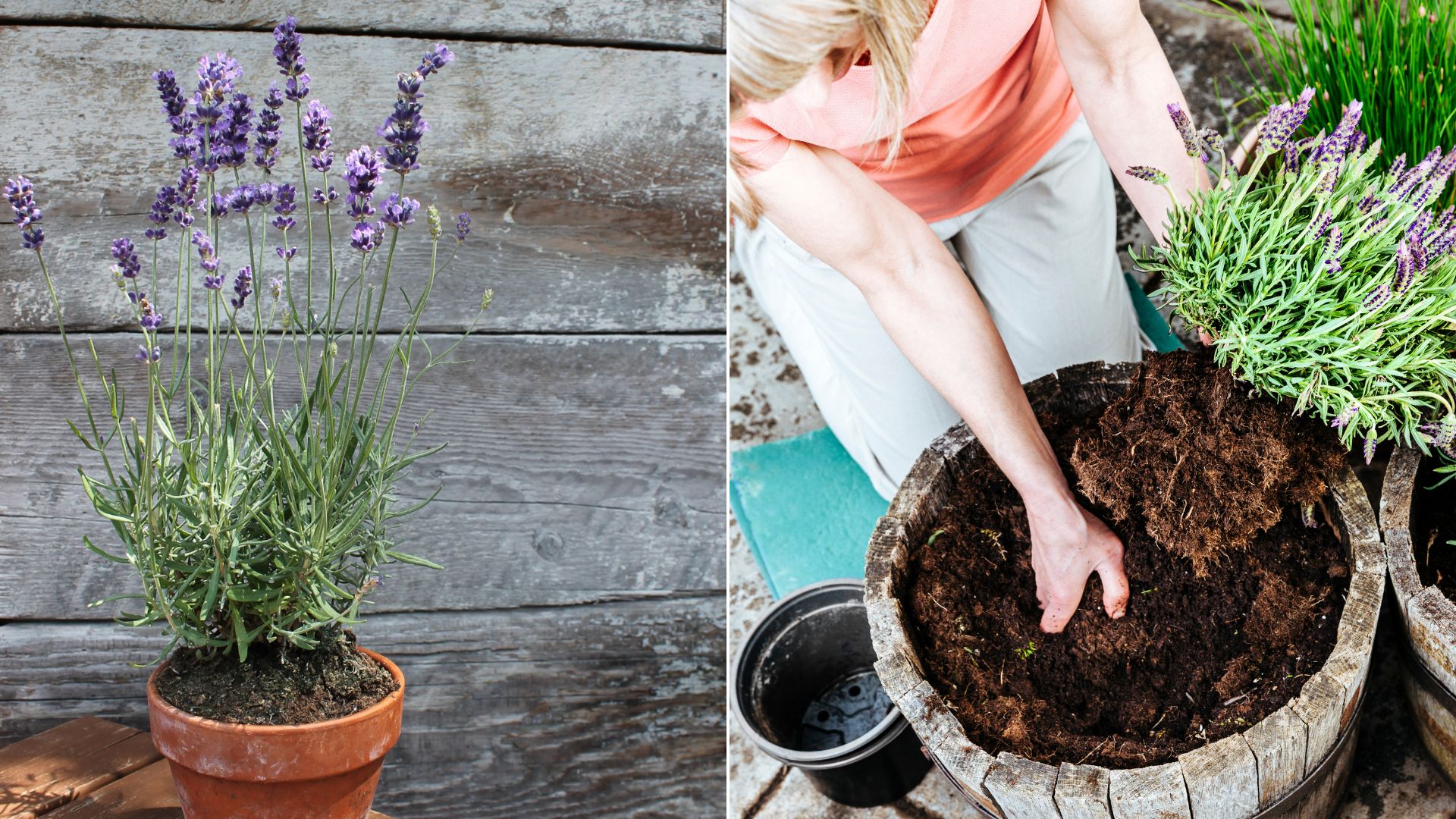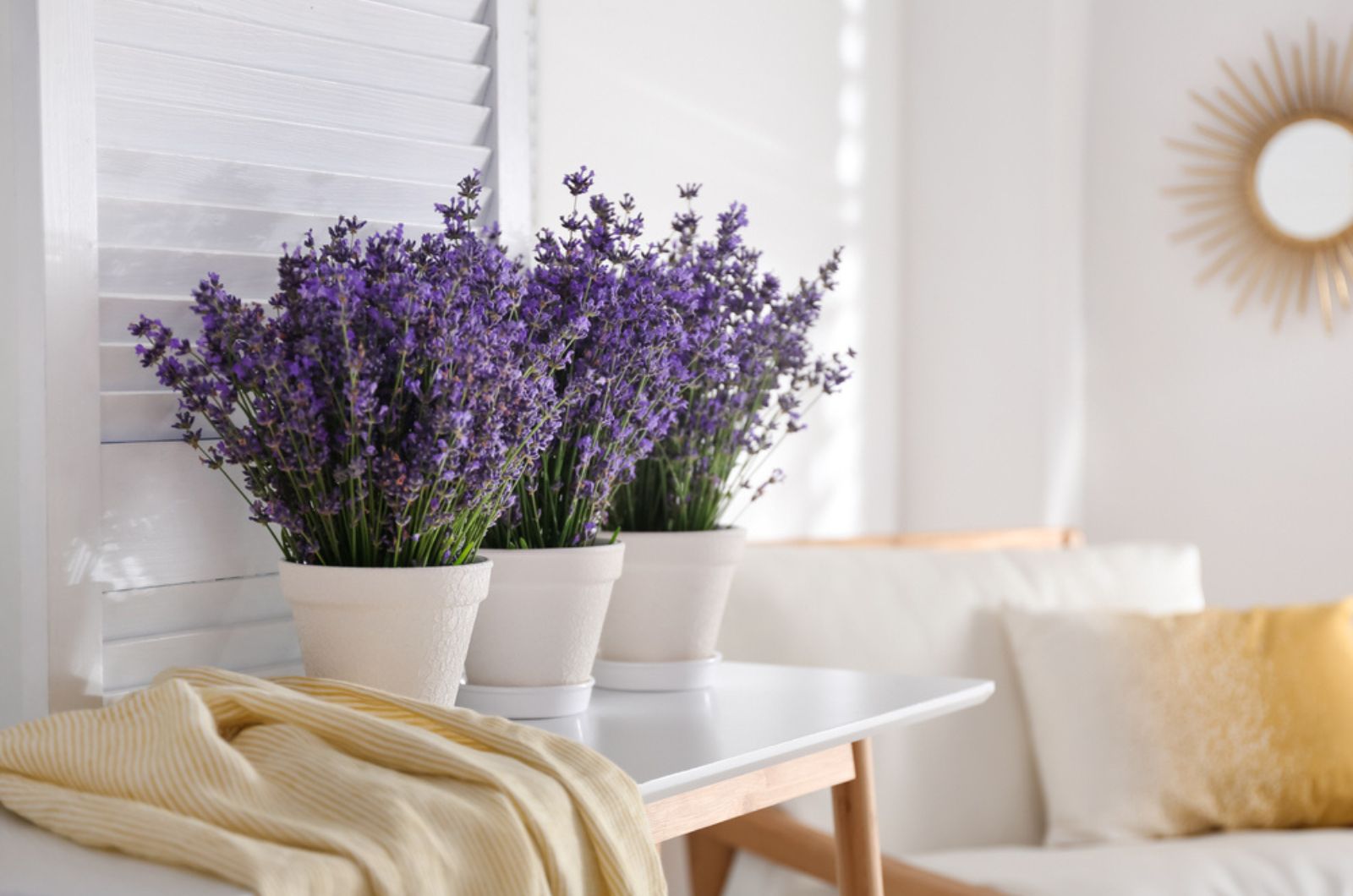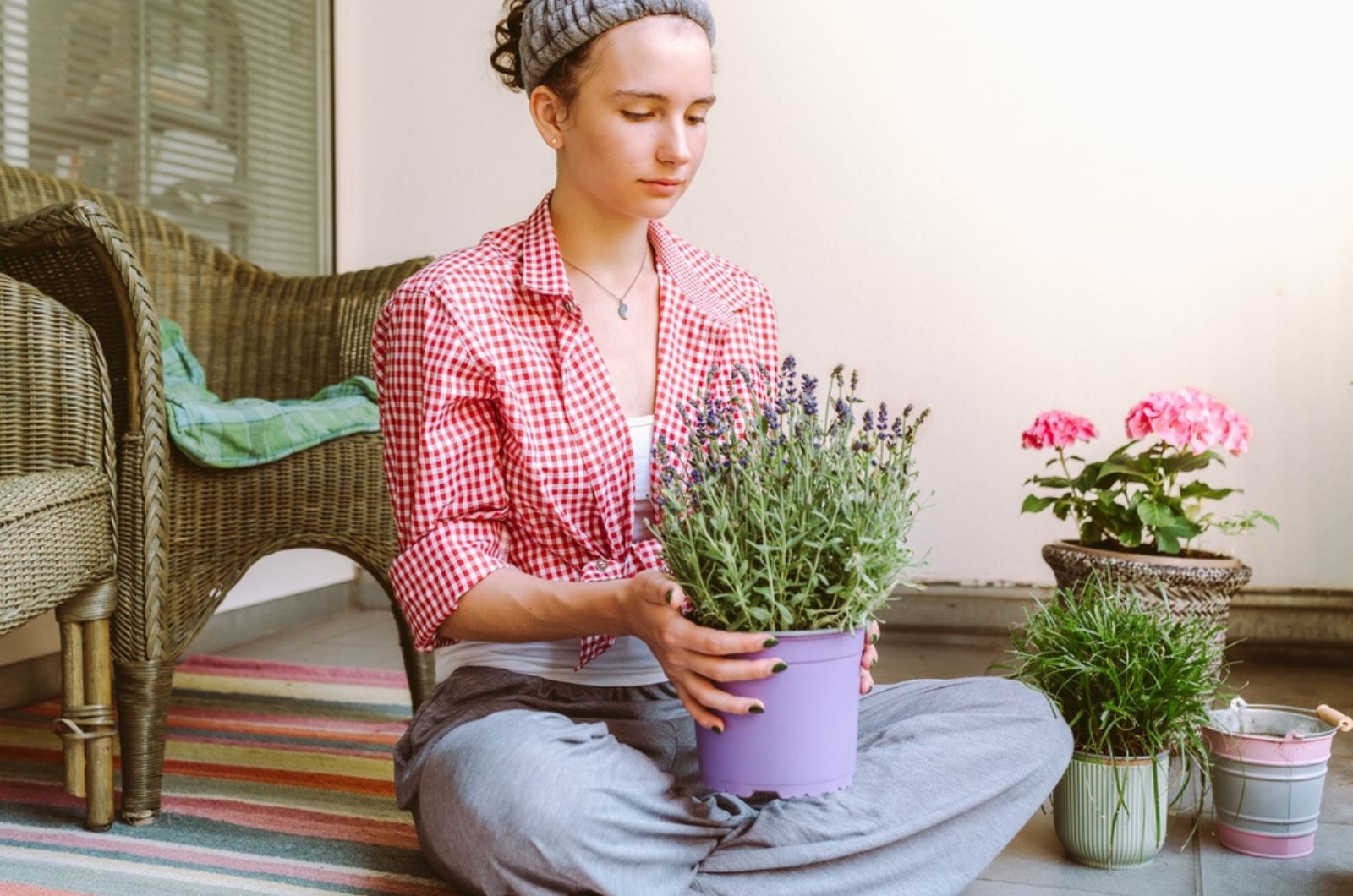If you don’t have any garden space but want to grow lavender, you can always do it indoors. Although it might seem strange, growing plants like lavender indoors is perfectly normal.
Not only do you get a delightful addition to your home decor, but you also get free lavender that you can use to make delicious teas and meals.
In this article, we are going to learn about finding the perfect container and giving your plants the best growing experience, so stay tuned!
Is Lavender Able To Grow Indoors?
Lavender is not your common houseplant like Monsteras, but that doesn’t mean that it can’t be grown successfully in pots and containers.
The growing environment is not the same as in the garden, which is why you have to provide your indoor lavender plants with special conditions. Don’t worry, it isn’t anything scary – they are still easy to grow, they just need more light than usual.
So, I would recommend you place it next to a south-facing window. If you are not able to do so, then you should get a good set of grow lights.
Some of the best lavender varieties to grow indoors are Canary Island lavender, Fernleaf lavender, and French lavender.
How To Grow Lavender Indoors
Growing lavender indoors is pretty easy. All you have to do is find the perfect container and follow the right plant care guide. With a little bit of care and patience, you will have thriving lavender in no time!
Find The Perfect Container
It all begins with finding the right container. The size of the container actually depends on the plant size. Ideally, the container is supposed to be two inches larger than the root ball of your plant.
The best pot materials for lavender are ceramic and terracotta, and make sure that they have drainage holes so that the water can drain away easily.
If you want to grow lavender from seeds, then check out this video:
Follow The Right Plant Care Guide
In this section, we are going to discuss the growing requirements for your indoor lavender plant. Let’s dive in!
Soil Requirements
Both indoor and outdoor lavender plants prefer well-draining soil. For your indoor beauty, you can use a mix of cactus soil and good quality potting soil with proper aeration. You can also add some sand or perlite to improve drainage.
Light Requirements
Lavender likes plenty of sunlight. It needs at least 4 hours of direct sun exposure every day. So, growing it next to a south-facing window would be the best option, and you should also rotate it so that every part of the plant gets a little bit of sunshine.
However, you can also get a quality set of LED grow lights if your apartment or home is not exposed to enough sunlight. Keep the plant under lights for about 12 hours during the day.
You can get these lights on Amazon, such as Desk Grow Light Full Spectrum.
Water Requirements
Potted lavender requires more watering than lavender grown in the ground. These generally need watering once every 10 to 14 days, but I would recommend you check the soil moisture before watering.
If the top few inches of the soil feel dry, go ahead and water your lavender. If not, postpone watering for a couple of days. This way, you will avoid dealing with overwatered lavender.
Temperature & Humidity Requirements
Keep the temperature between 50 and 55 degrees Fahrenheit during the night, and daily temperatures at about 70 degrees Fahrenheit during the growing season.
Lavender should be grown in milder temperatures from late fall to the end of winter, with nighttime temperatures between 45 to 50 degrees and 60 to 65 degrees Fahrenheit during the day.
Indoor humidity levels (about 40%) are usually sufficient for lavender, but ensure good air circulation to prevent humidity-related issues.
Fertilizer Requirements
Lavender is not a heavy feeder. You should fertilize your indoor lavender only during the growing season. Either use a balanced, water-soluble fertilizer or organic plant food formulated for potted plants.
Pruning
Regular pruning is vital for indoor lavender to maintain its shape and encourage bushier growth. After the first bloom cycle in spring, trim back spent flowers and shape the plant by removing 1/3 of the growth.
In late winter or early spring, do a more severe pruning, cutting the plant back to 2-3 inches above the woody stems.
Repot Lavender Properly
Lavender is not a fast-growing plant so you don’t have to worry about repotting it frequently. It usually takes up to 2 years before lavender is ready for a new container.
When repotting lavender, make sure to get a new pot that is slightly larger than the current one. I would also recommend you use fresh soil. After repotting, water the plant thoroughly.
For more information, please check: Helpful Tips To Transplant Lavender + 4 Things To Avoid




